July 11, 2019 - Flight West - Day Sixteen - Part II - Cavanaugh Flight Museum
|
|
In Dallas, I was staying with an old friend Ken who is a volunteer at the Cavanaugh Flight Museum located on at Addison Airport (ADS), a busy towered airport on the north side of Dallas.
Ken gave me a guided tour of the Museum which began as the personal collection of businessman Jim Cavanaugh. Cavanaugh and his father, an aircraft mechanic, constructed both a Pitts S-1S biplane and a Christen Eagle together. In 1969, Cavanaugh started Jani-King, currently the world’s leading commercial cleaning service, with more than 11,000 franchises in a $78 billion industry. Cavanaugh's own collection began with the purchase of a half-share in a 1939 Piper J-3 Cub in 1980. The museum opened in October 1993. The collection is housed in at least four large hangars plus a visitor's center.
|
| |
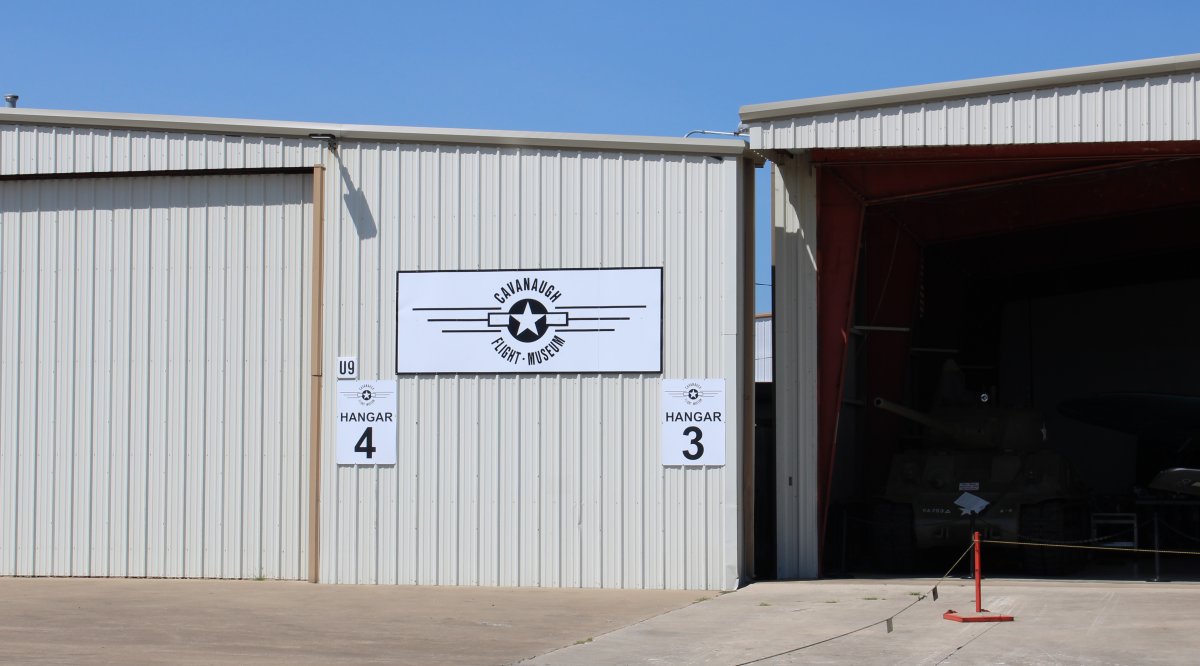 |
|
|
Standing in front of a beautifully polished P-51 Mustang.
|
| |
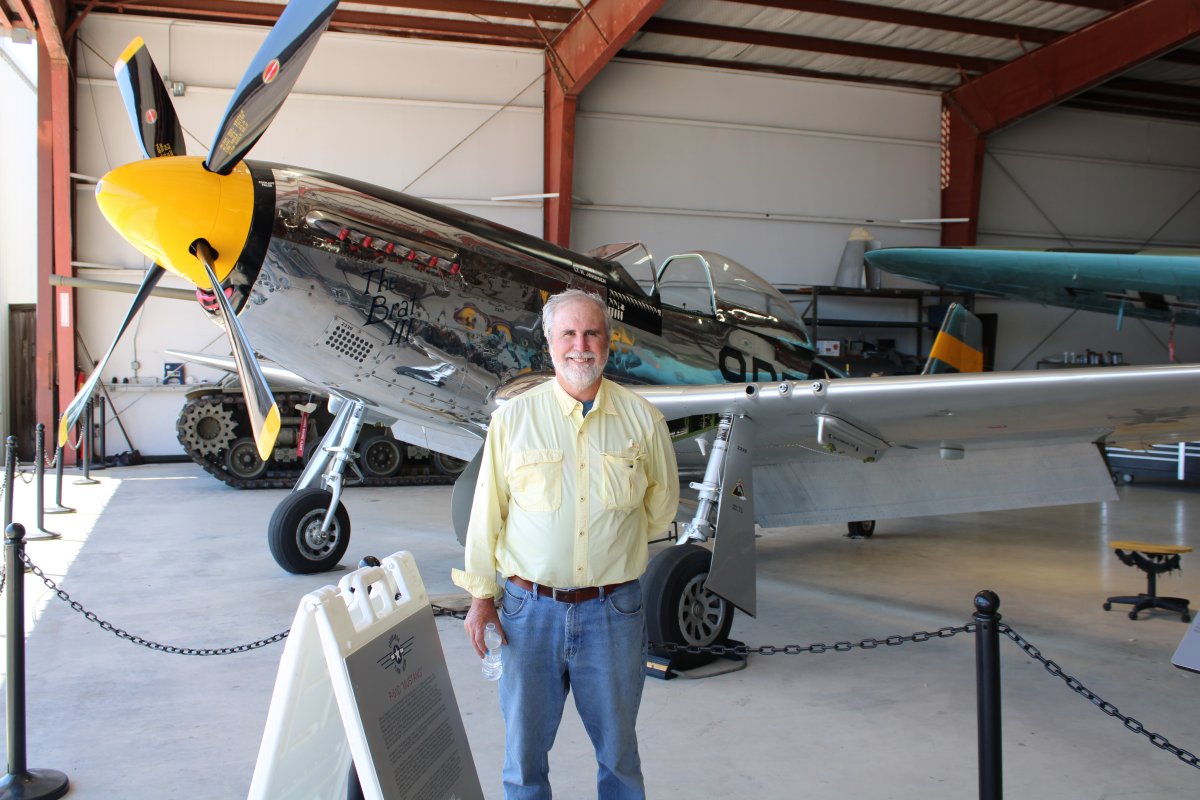 |
|
| Ken had a very distinguished career in the U.S. Navy, commanding an EA-6B Prowler squadron, Test Pilot School (NFO), and Airboss on an aircraft carrier among other things. But when he started out he was an Aviation Structural Mechanic in a P-3 squadron. So he knows what he is doing when it comes to working on airplanes. Here he points out a recent repair he made to this A-7. |
| |
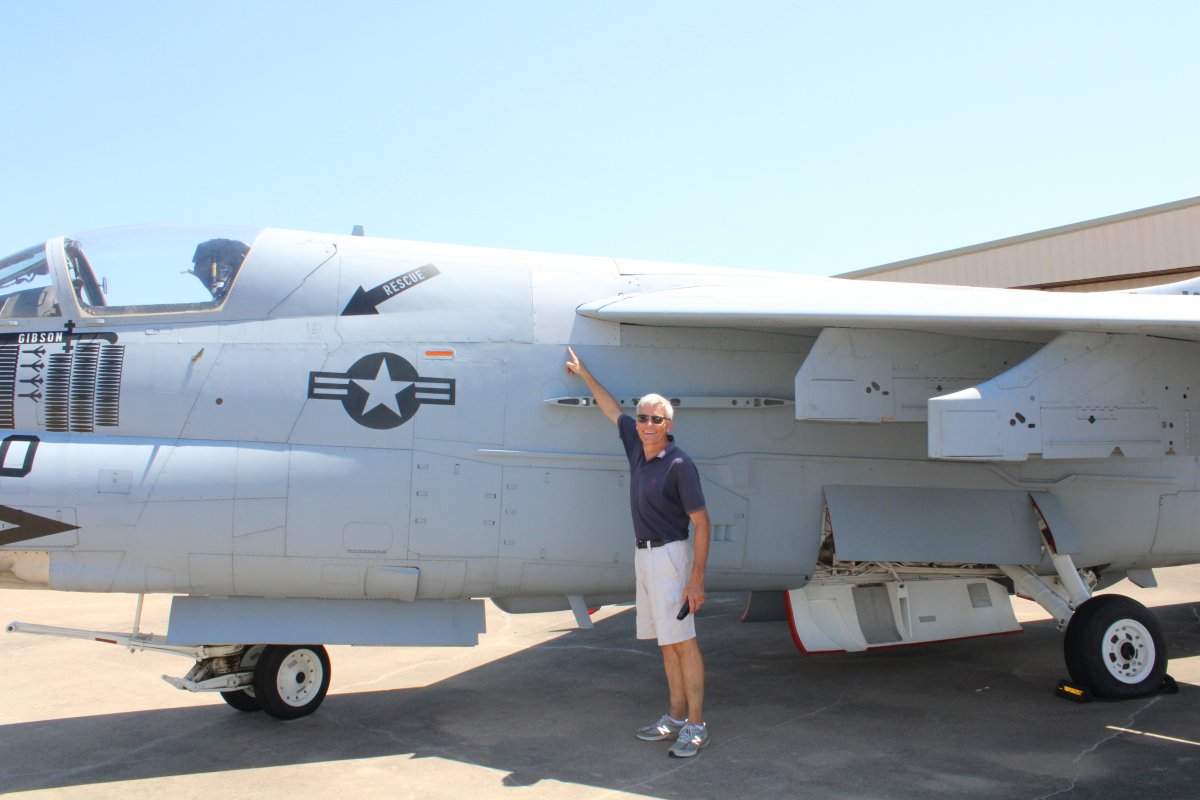 |
|
|
He also put new tires on this Me-109.
|
| |
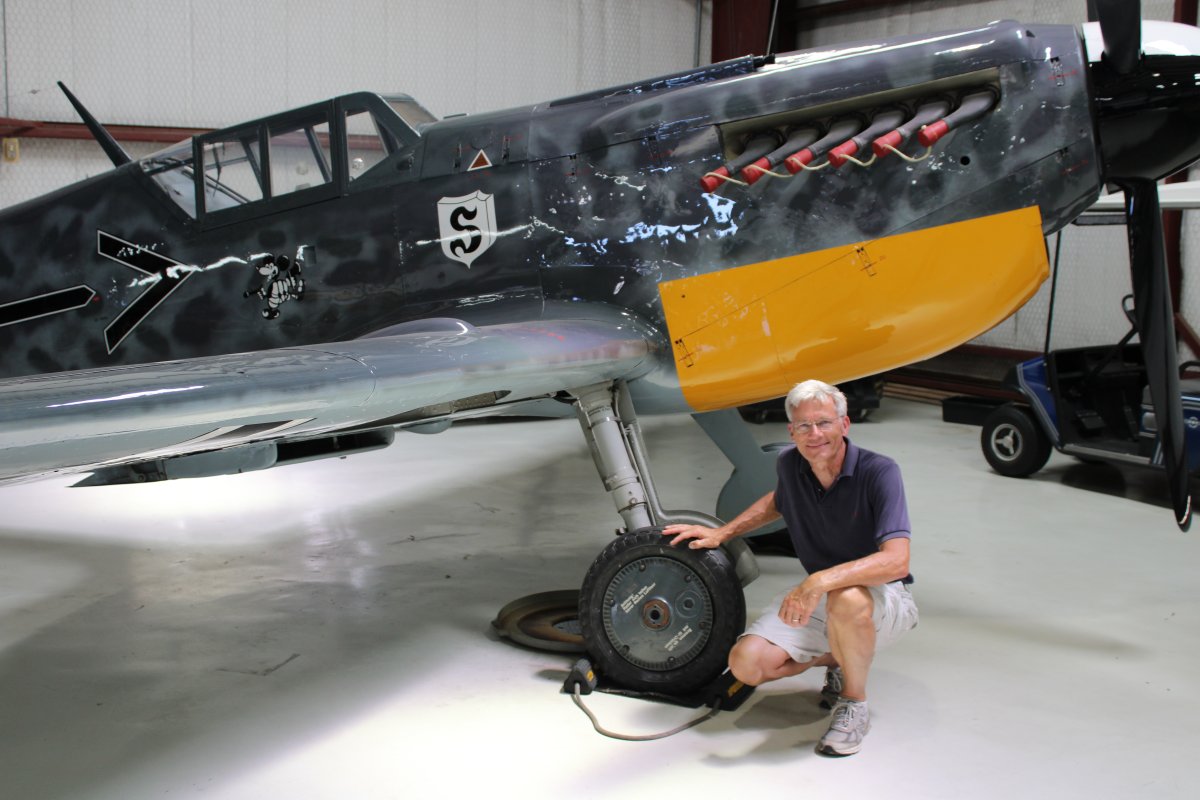 |
|
I'd never heard of the Cavanaugh Flight Museum and had no idea of what to expect. I knew this museum would be something special when we walked into a hangar and the first airplane I saw was a
Heinkel 111! The only other one I've ever seen is at the Royal Air Force Museum, in London. |
| |
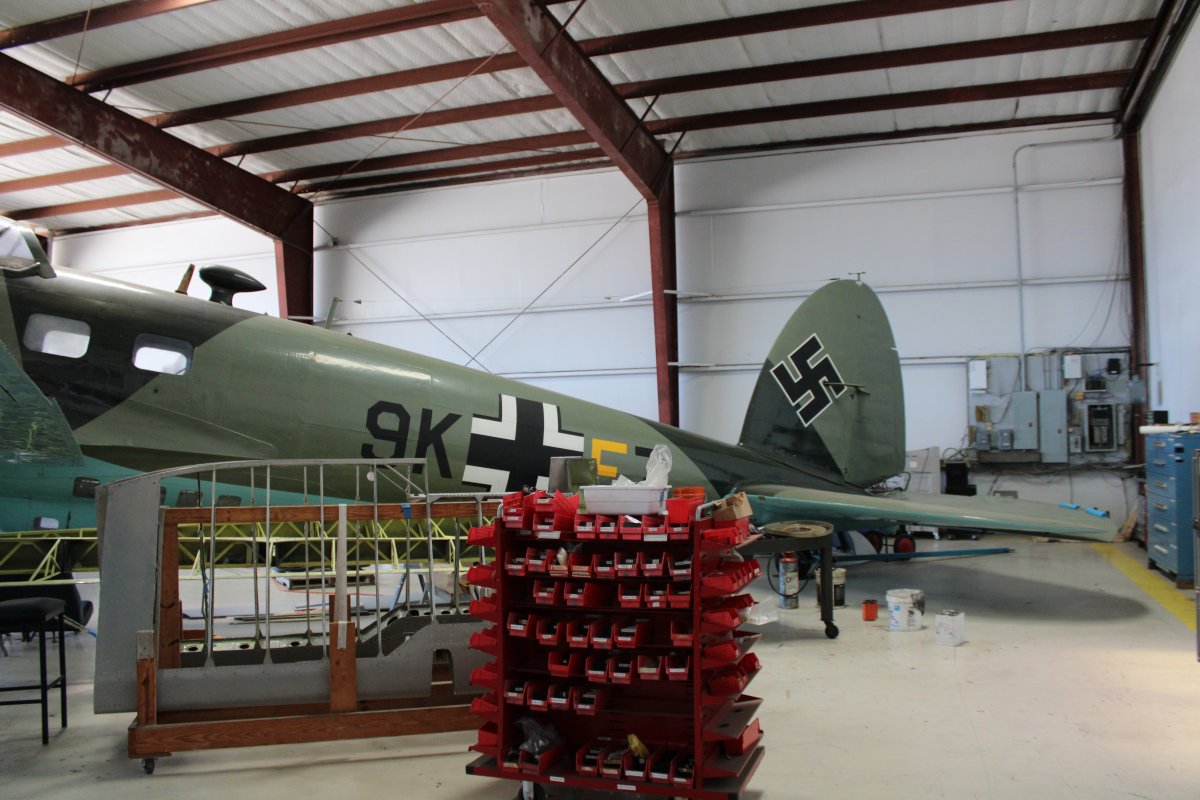 |
|
| The HE-111 was a German medium bomber in WWII. This particular aircraft was actually built in Spain after the war and equipped with Merlin engines. It was used in the film "Battle of Britain". The museum acquired it in 1995. |
| |
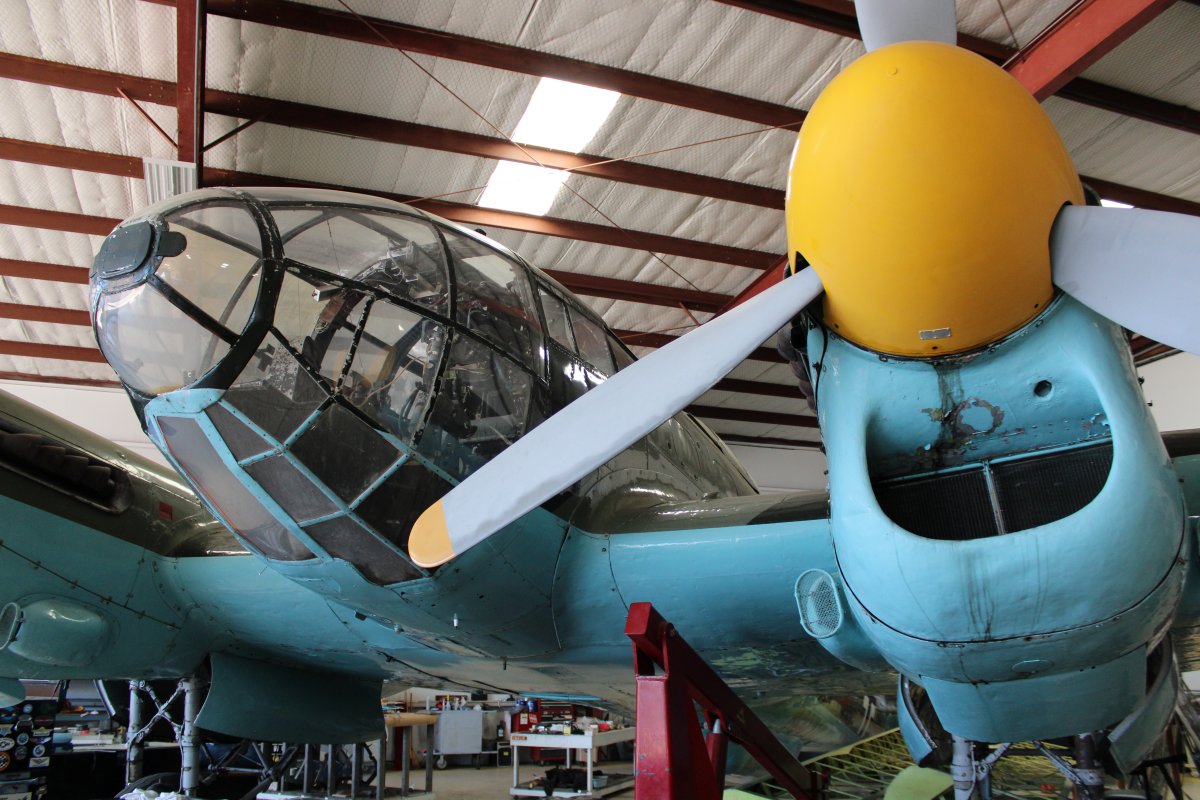 |
|
| Look at that radial engine on the Stearman! Brand spanking new! |
| |
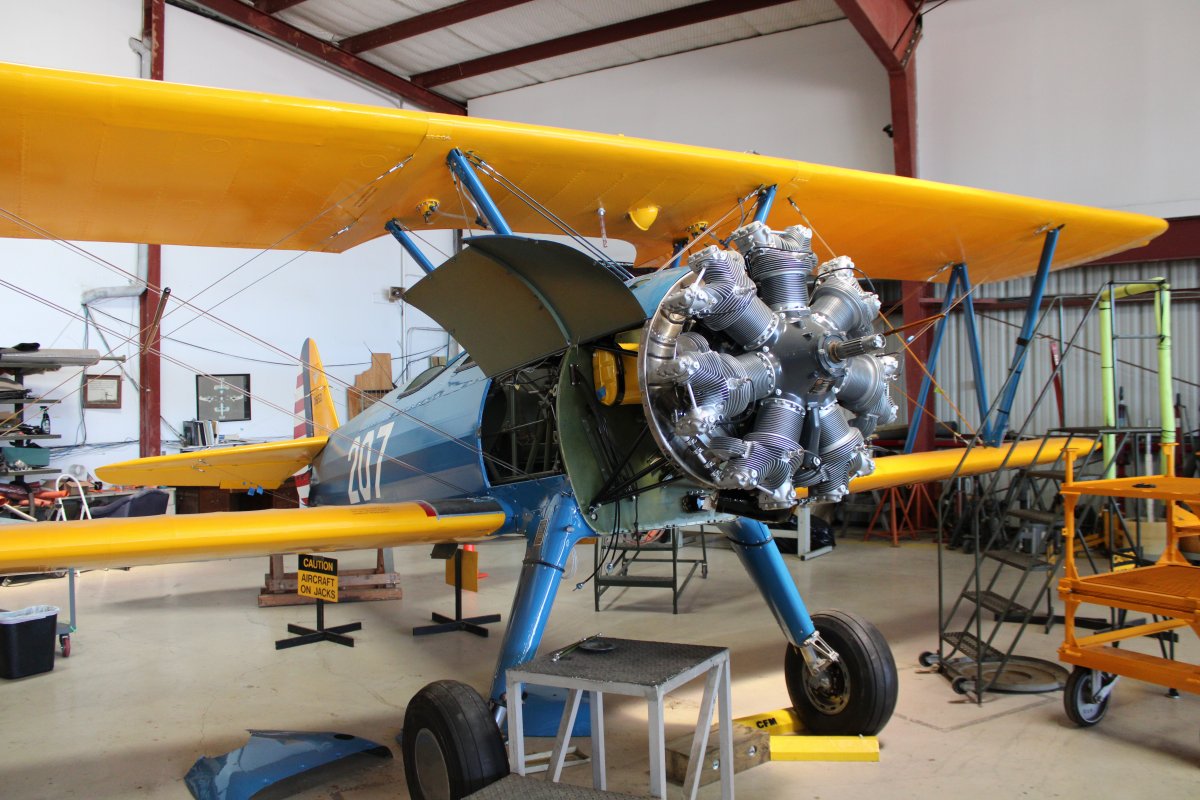 |
|
|
A good look at the inner-workings of a Stearman.
|
| |
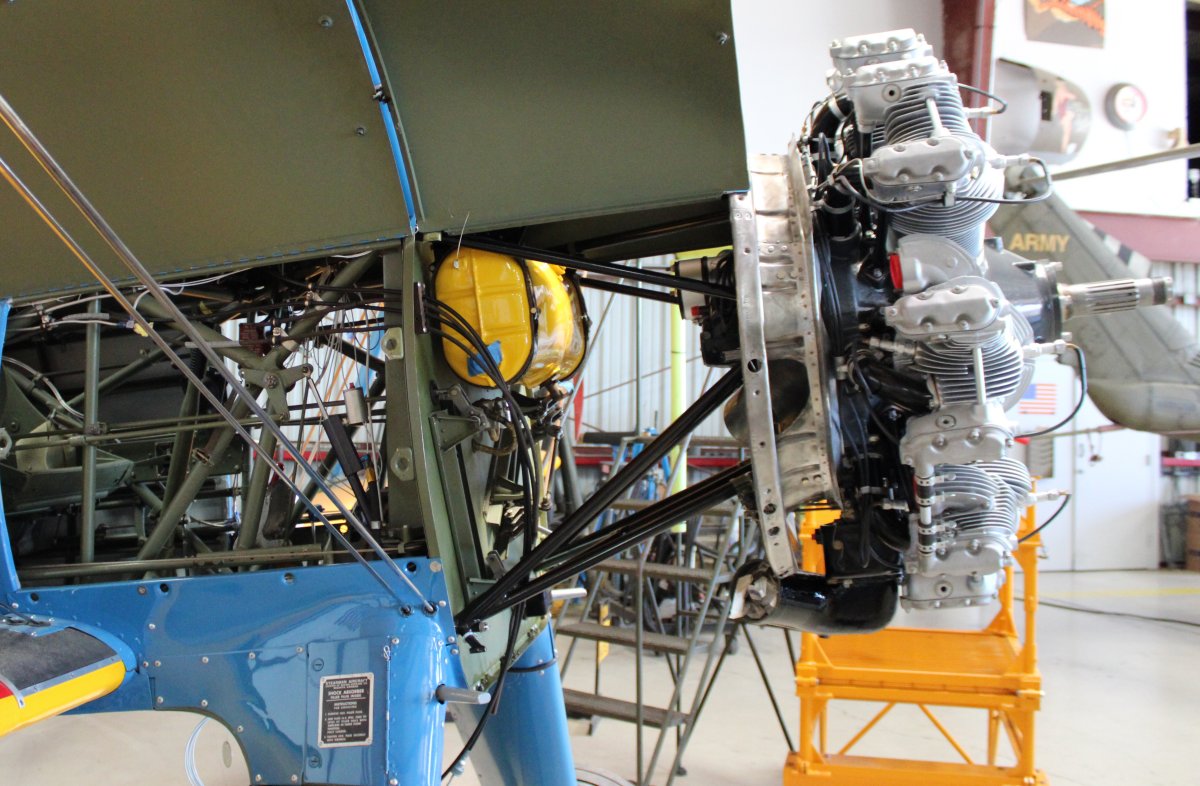 |
|
| A Bell OH-13D Sioux, also known as the MASH helicopter. It was a military version of the first helicopter to be certified for private use: the Bell 47. |
| |
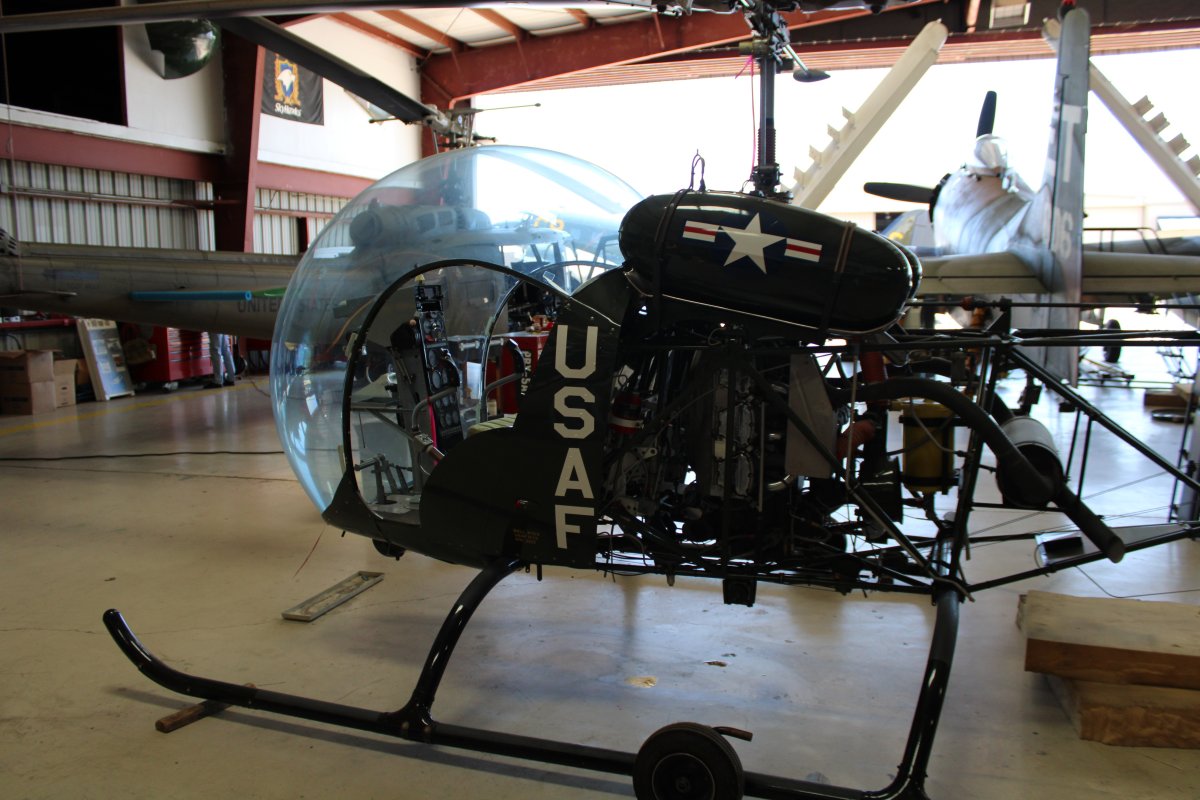 |
|
|
Workhorse DC-3/C47.
|
| |
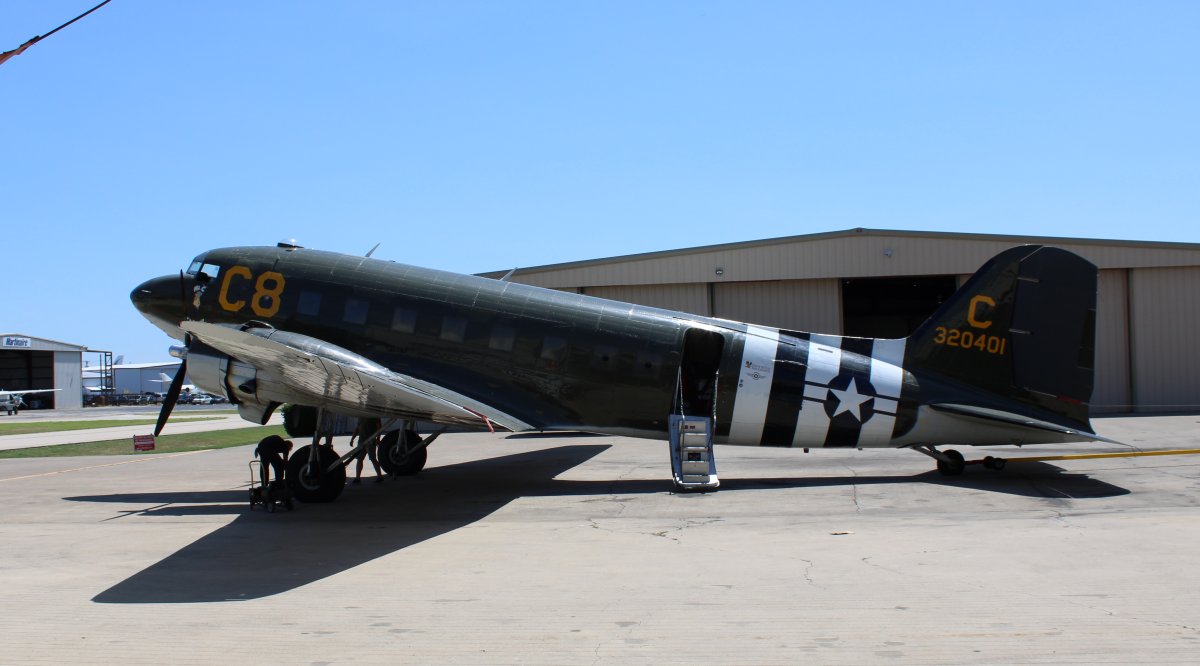 |
|
| Big AD-1 Skyraider. |
| |
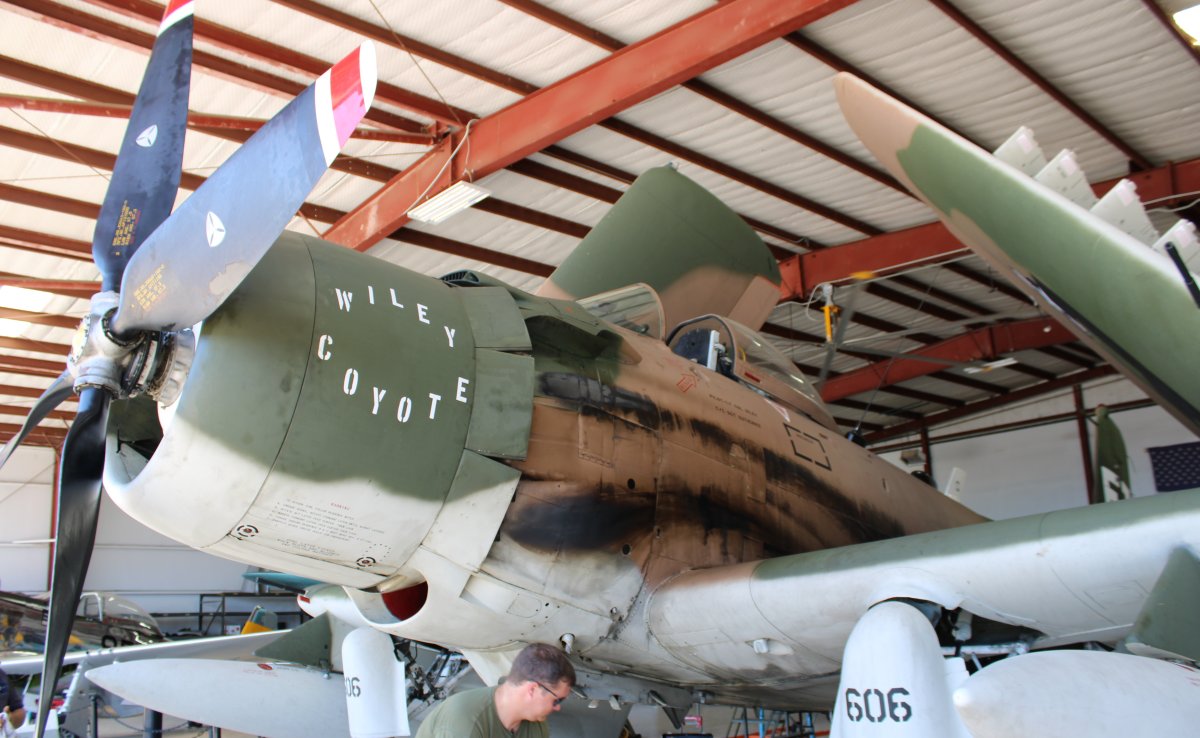 |
|
| Another look at the big, rugged AD-1 Skyraider. |
| |
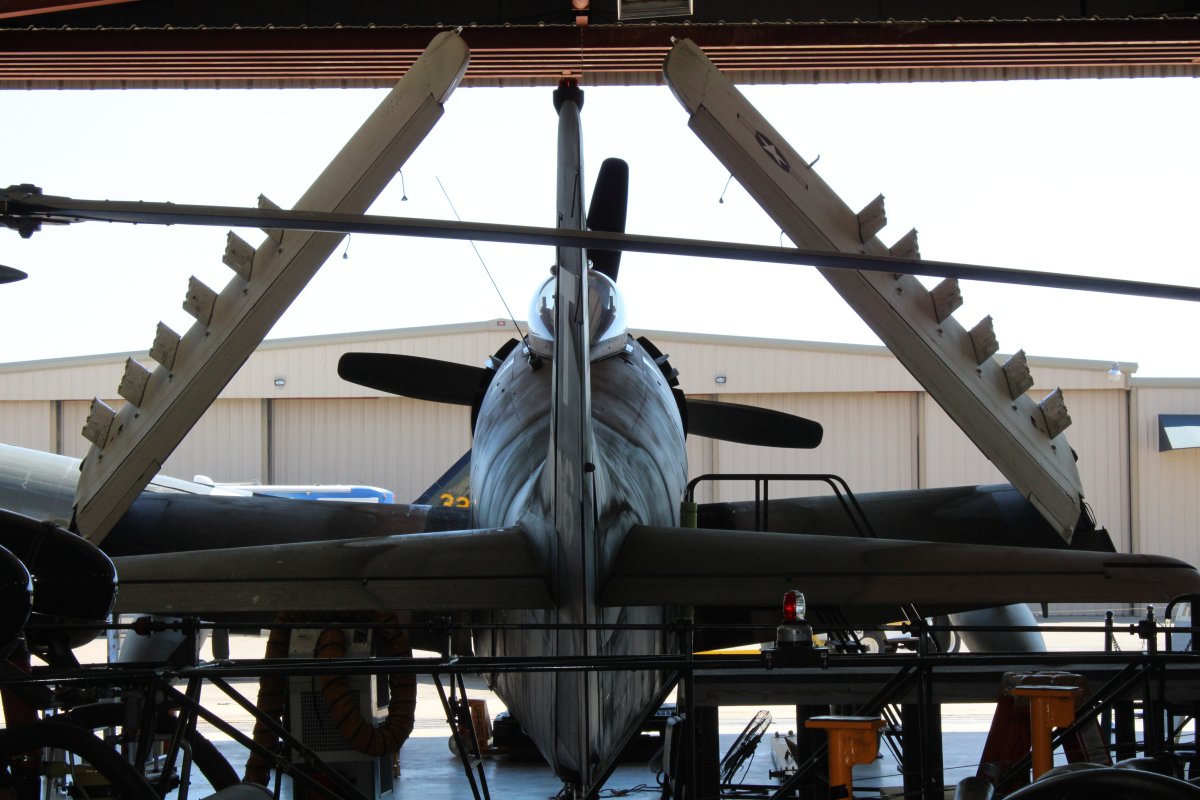 |
|
| A little Hughes OH-6 Cayuse helicopter with the HE-111 in the background with its thick wings. The OH-6's were used in Vietnam. |
| |
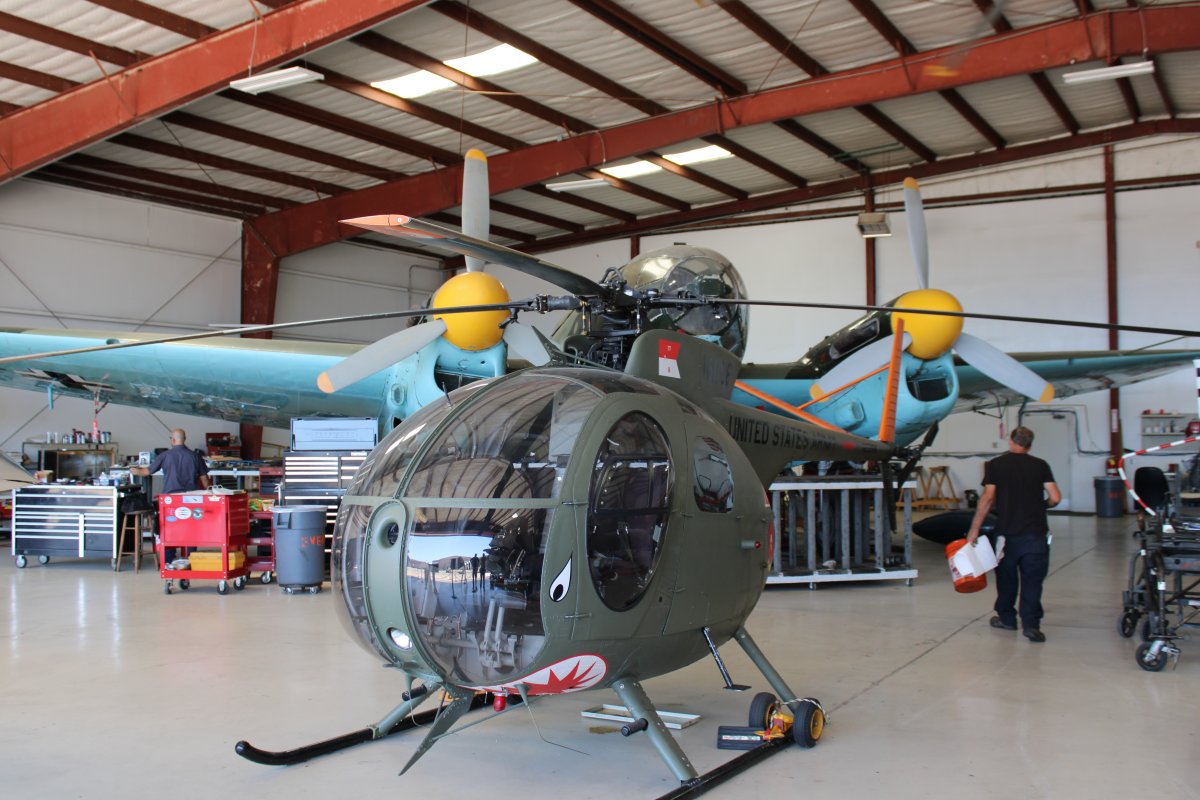 |
|
| The P-51's polish job blew me away. I'd like to watch the person who polishes this plane, to see how they get that perfect shine. |
| |
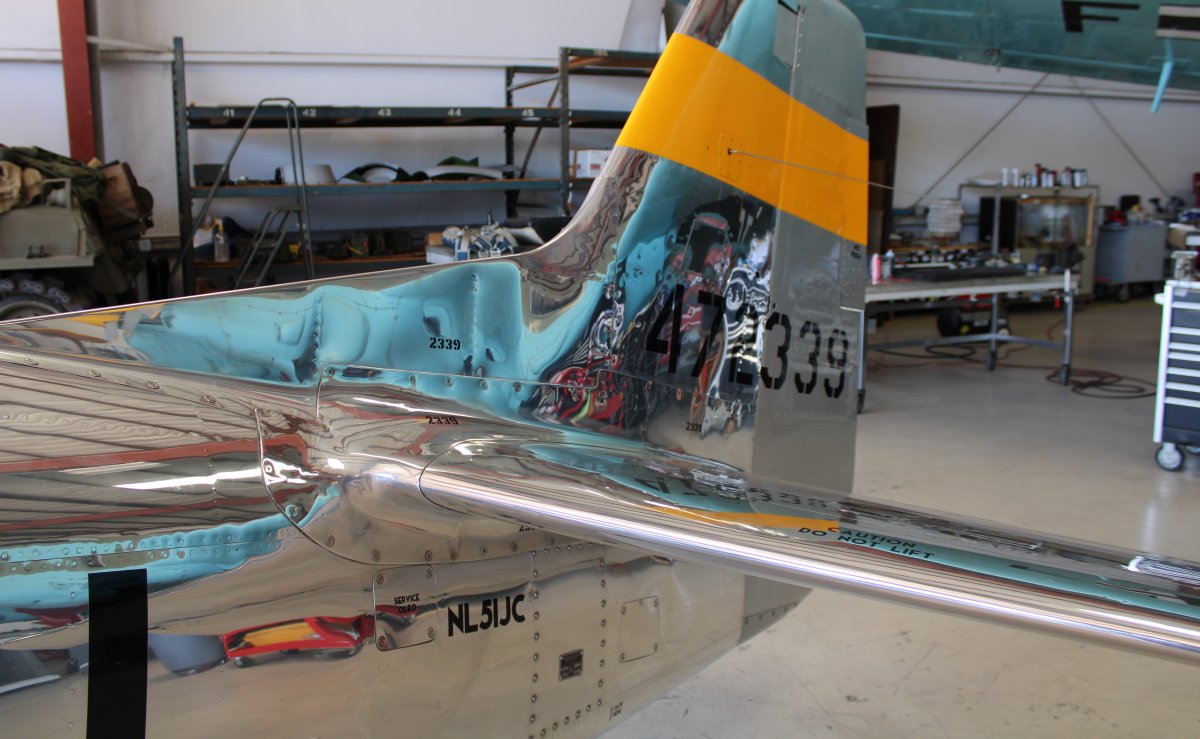 |
|
|
Mirror like.
|
| |
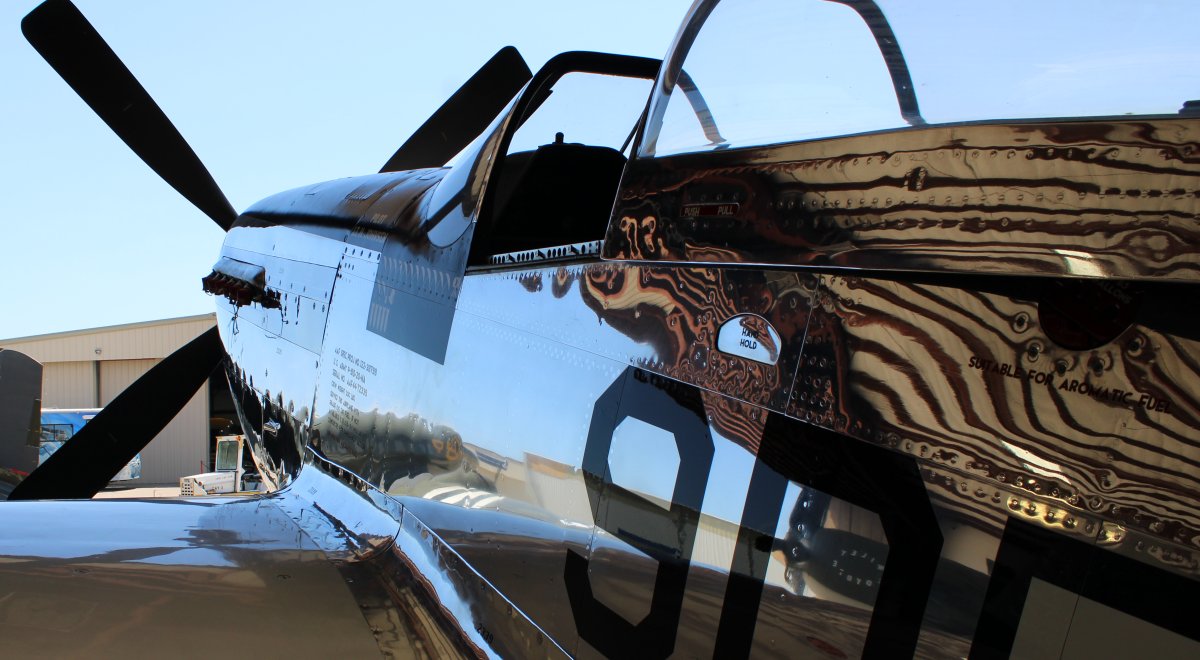 |
|
| An M50 "Super Sherman". This tank has an interesting history. Serial no. 17091 was built by Chrysler at the Detroit Tank Arsenal in December 1942 and left the factory as an M4A4, equipped with a 75mm (M3) medium velocity general purpose main gun and was powered by a Chrysler Multibank A57 5xL6 30 cylinder 20.5 liter gasoline engine. In late 1944, 17081 was delivered to Europe as part of the Lend-Lease agreement between the US and the UK. It fought in Europe until the end of the Second World War, and then was given to the French as part of their post war army supplies. In the late 1950s the tank was acquired by the Israeli army, and upgraded with the French CN 75-50 75 mm gun in the "old" turret fitted with a counterweight. In the late 1960s, the engine was changed from the Chrysler gasoline engine to a Cummins VT8-460 diesel engine. With the Israeli modifications 17091 received the designation of M50 "Super Sherman" . While in service in Israel, 17091 fought in the "Six Days War" (1967) and the "Yom Kippur War" (1973). It shows some battle damage on the turret and on the main gun. The Israeli Army sold 17091 as surplus in the late 1980s. The Cavanaugh Flight Museum added 17091 to its collection in 2007. |
| |
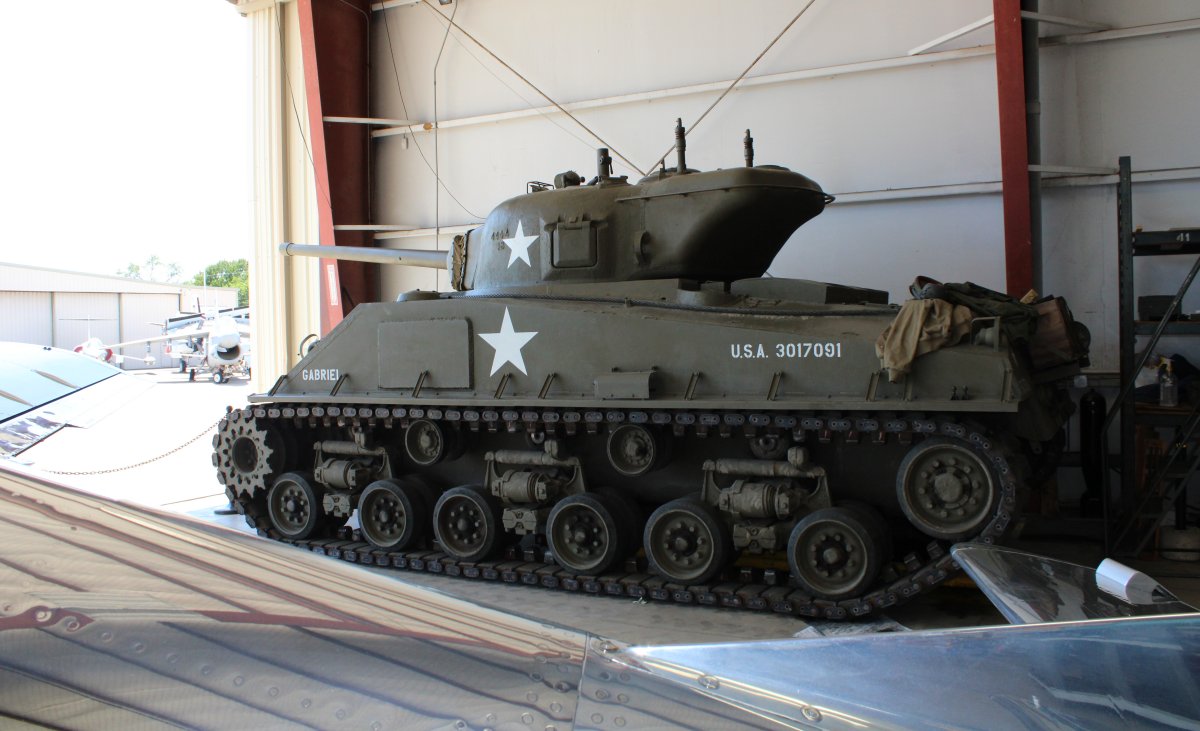 |
|
|
The jets were parked outside (except for that S-2 Tracker)
|
| |
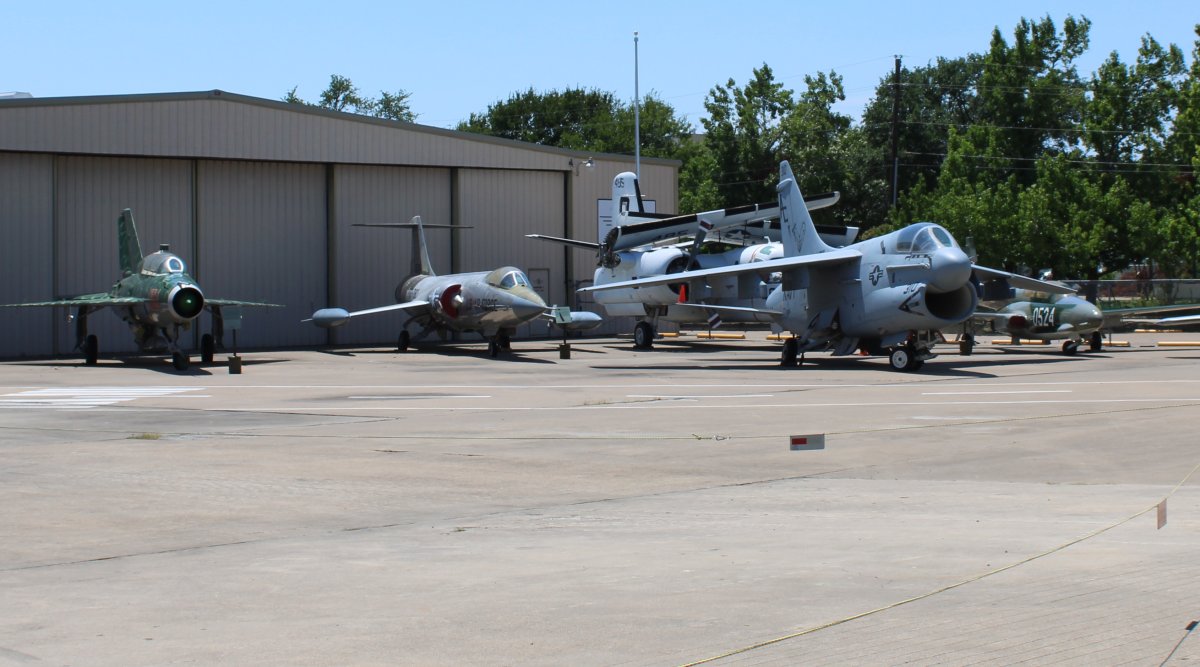 |
|
|
This AD-5 is a derivative of the AD-1 Skyraider. It is officially known as a Douglas AD-5W / EA1-E Skyraider. The AD-5 was a multiple crew variant with significant modifications. The fuselage was lengthened and widened to accommodate side by side seating for pilot and co-pilot as well as a crew / equipment compartment aft of the pilots. The engine was moved 8 inches forward and the vertical tail area was increased almost 50%.
This particular aircraft served with Carrier Airborne Early Warning Squadron Twelve (VAW 12) from November 1956 through December 1960. The next assignment was with VAW 11 from May 1961 through November 1962. It was retired from Navy Service in 1963 as the E-2s took over the Airborne Early Warning role.
|
| |
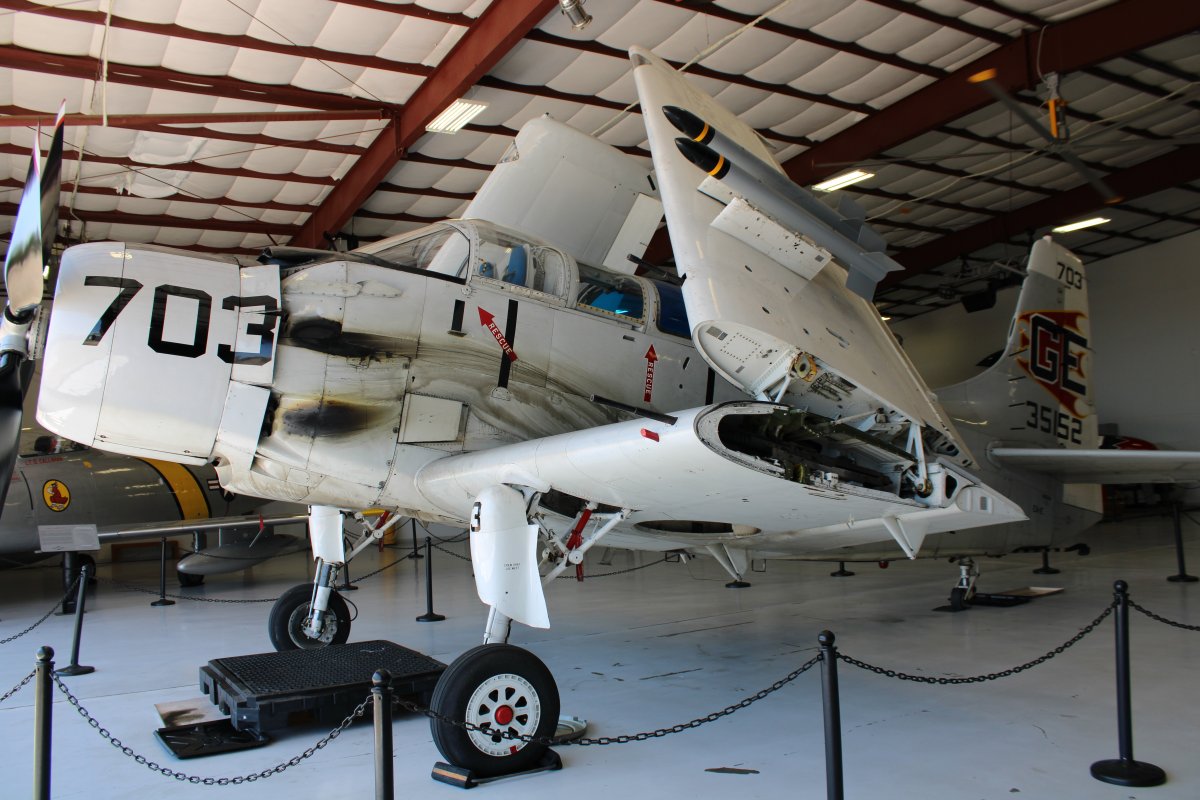 |
|
|
A very nice-looking Grumman F9F Panther which was the first jet powered fighter to see widespread service with the U.S. Navy and Marine Corps. It was the first Navy jet to shoot down an enemy aircraft, the first Navy jet to shoot down an enemy jet-powered aircraft and the first jet aircraft used by the Blue Angels aerobatic team.
The Cavanaugh Flight Museum acquired this aircraft in 1993 and put it through a 25,000 man hour restoration to restore it to its original flying condition. It was awarded the title "Grand Champion Warbird" at both the 1995 E.A.A. Sun-N-Fun Fly-In at Lakeland, FL and the 1995 E.A.A. Fly-In in Oshkosh WI. It is painted in the colors and markings it wore when in service with Fighter Squadron VF-721 "Starbusters" during the Korean War.
|
| |
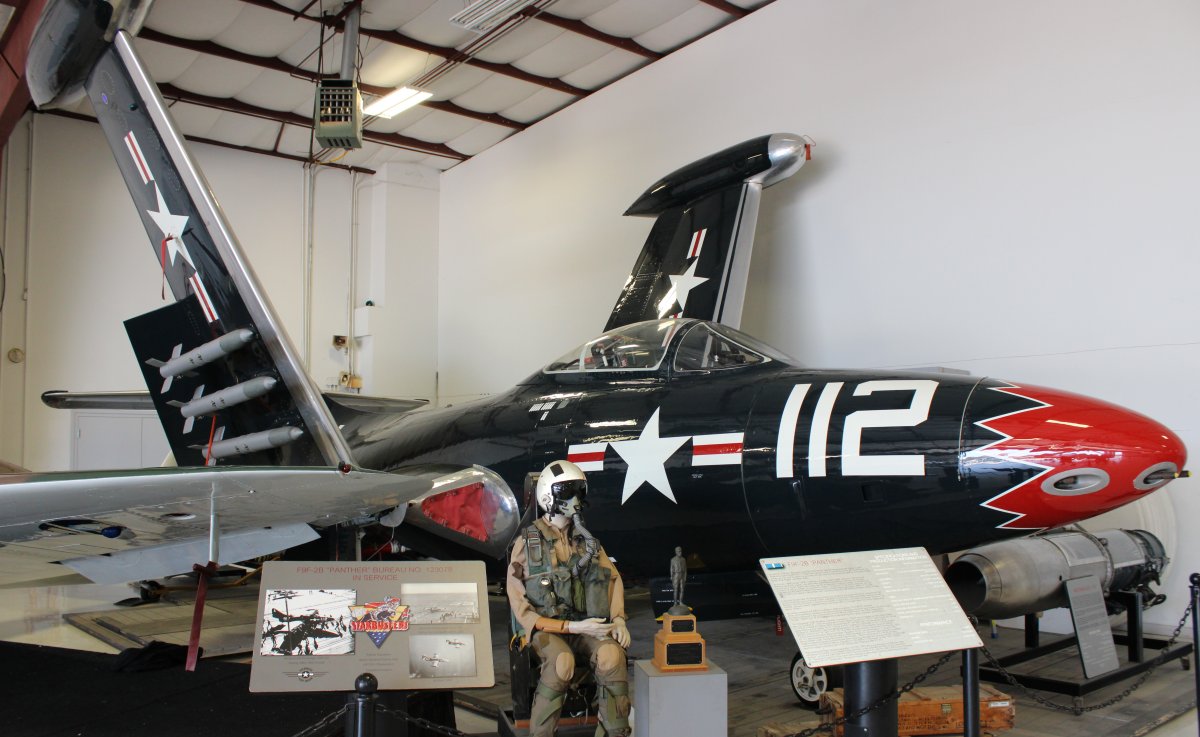 |
|
|
A Spitfire Mark VIII.
The RAF took delivery of the museum's Mk. VIII in June 1944. It was quickly tropicalized in England and shipped to Bombay, India in July 1944. The Spit was assigned to No. 17 Squadron, based at China Bay and Vavyuina, Ceylon (Sri Lanka). It flew numerous combat missions against the Japanese from July 1944 to June 1945 and often flew as a fighter escort for the No. 28 Squadron, a dive bomber unit equipped with Hawker Hurricanes.
The aircraft was sold to the Indian Air Force in 1947. After thirty years in India, the aircraft was sold in 1977 and returned to England. An Italian collector purchased the plane in 1979 and completely restored the aircraft. The Cavanaugh Flight Museum acquired the Spitfire in 1993 and it wears the same colors it carried while serving with No.17 Squadron during World War II.
|
| |
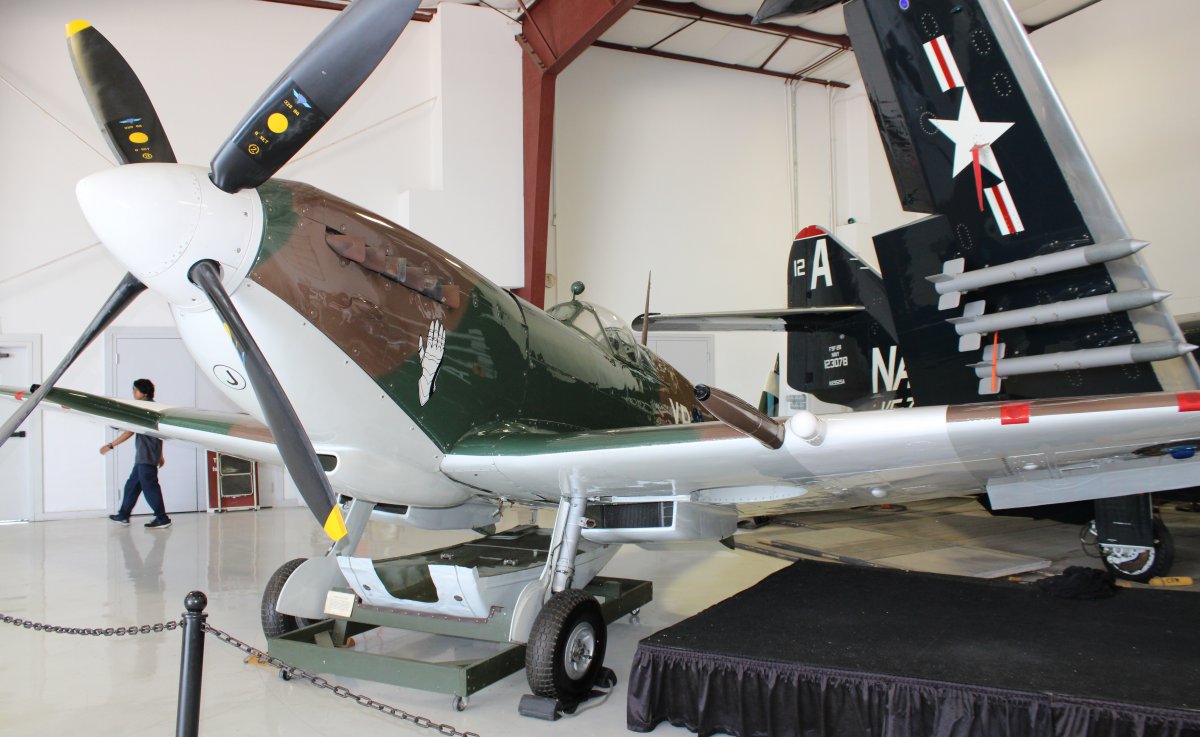 |
|
|
Menacing-looking F-104 Starfighter. Known as the “missile with a man in it”, the Lockheed F-104 Starfighter was the first American fighter capable of reaching twice the speed of sound. Its exceptionally clean lines and high top speed made the Starfighter one of best air superiority fighters of its time. This particular jet spent many years with the Royal Jordanian Air Force.
|
| |
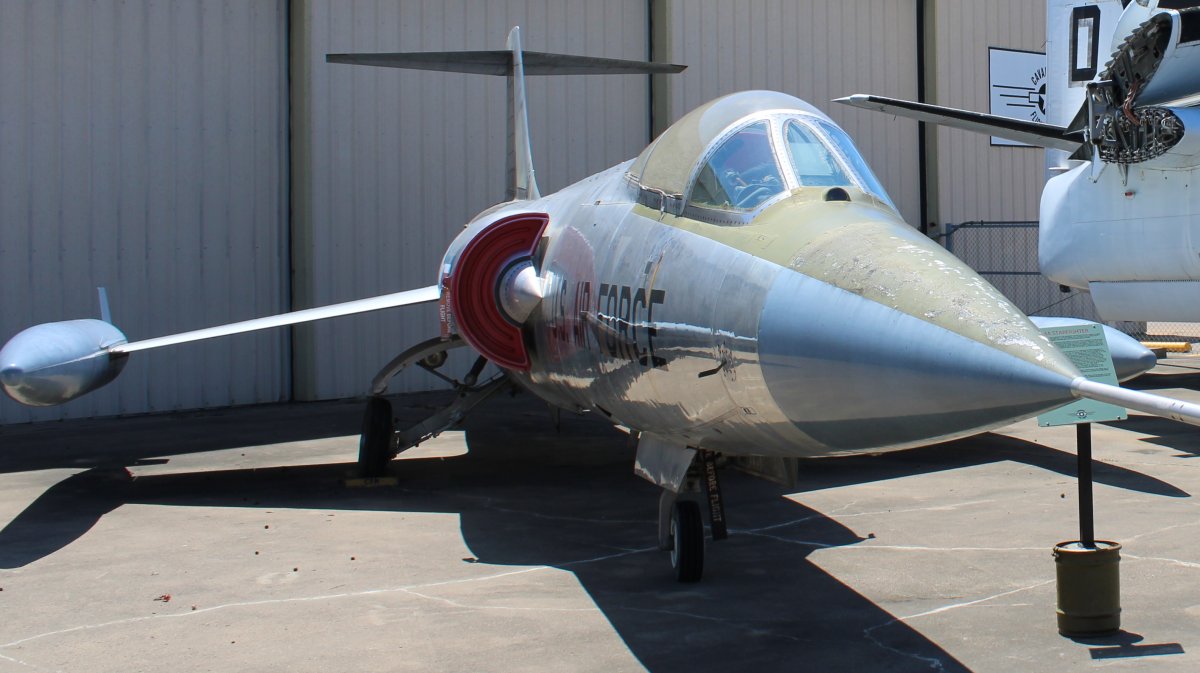 |
|
| Another look at the Me-109. The Cavanaugh Flight Museum's Me-109 was built in Germany in 1943 and shipped to Spain that same year as part of an agreement for the licensed production of Me-l09s there. Hispano Aviación, under obligation to supply the Spanish Air Force with fighters after the war, was unable to secure any Daimler-Benz DB 605 engines and instead fitted these planes with a British Rolls-Royce Merlin. Designated the HA-1112, this aircraft served in Spain until 1967. The Me-109 is painted in the personal colors of General Adolf Galland, one of Germany's most famous World War II aces. This aircraft has appeared in a number of films including “Memphis Belle”, “The Battle of Britain”, the H.B.O. film “The Tuskegee Airmen” and the British T.V. series “Piece of Cake”. |
| |
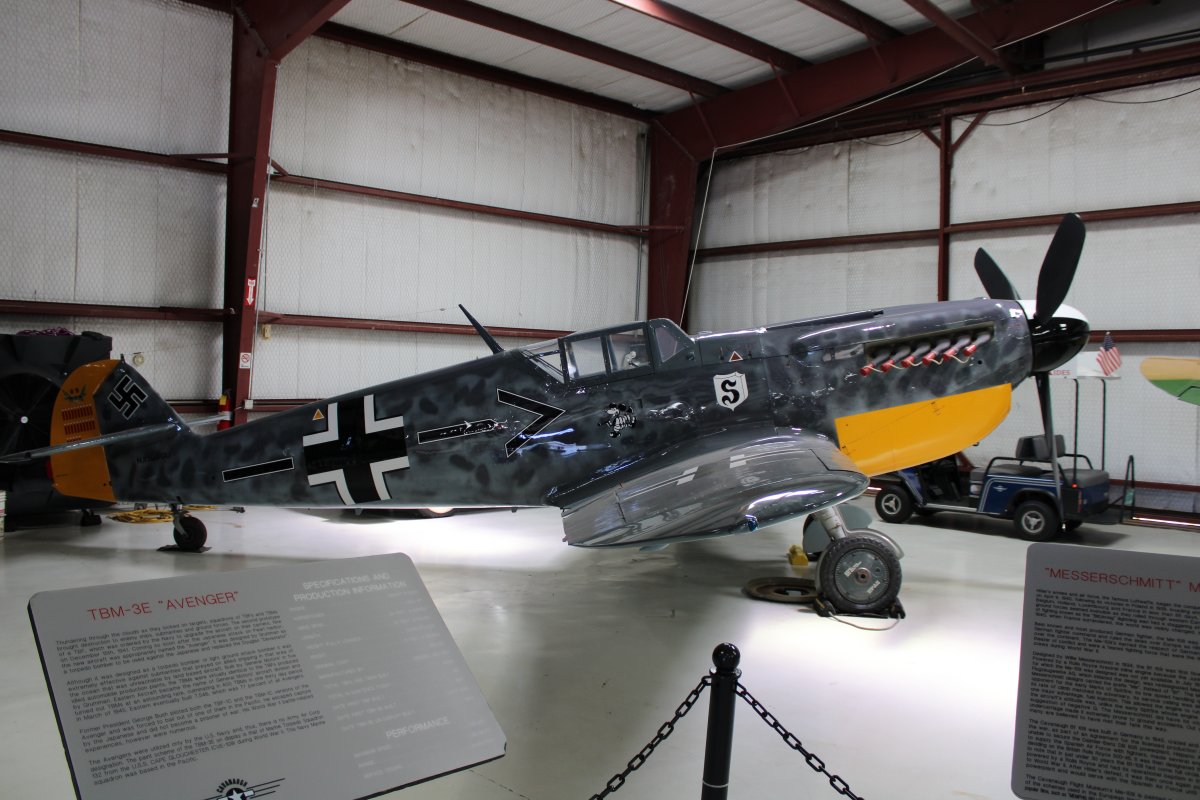 |
|
The Yakovlev Yak-3 was one of the smallest and lightest combat fighters produced during World War II. As such, it proved itself a formidable dogfighter at altitudes below 13,000 feet, and outperformed the Me109 and Fw-190. It entered service in July, 1944. The Yak-3M on display was built in 1994 at the Yakovlev aircraft factory in Orenburg, Russia using the original plans, tools, dies, and fixtures. It is painted in the colors and markings of Captain Louis Delfino, one of the Free French pilots of the Normandie-Niemen regiment which served on the Eastern Front fighting the Germans, the only Western Allied unit to fight with the Soviet forces until the end of the war in Europe. |
| |
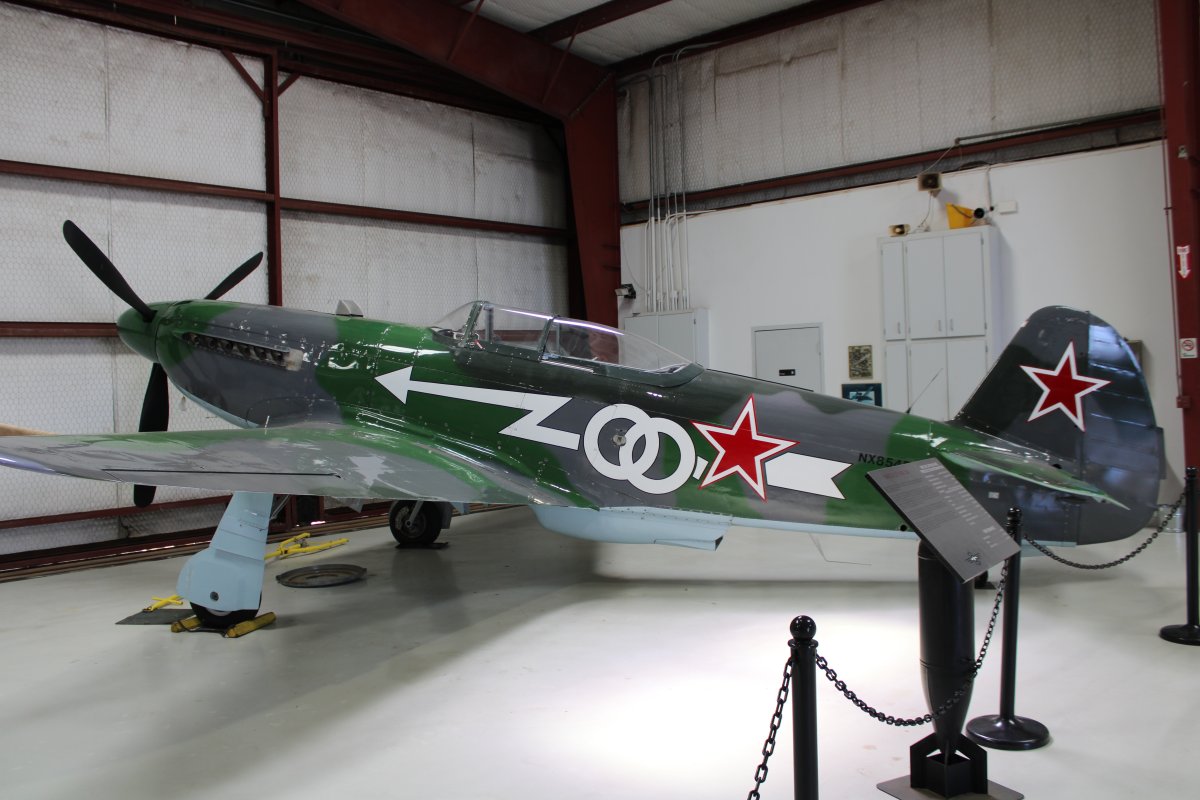 |
|
| A weathered Republic F-105 Thunderchief sits outside in the hot sun. The F-105 was a brutally large, powerful and effective fighter/bomber. Employed over Vietnam in a role for which it had not been designed, the F-105 Thunderchief (commonly known as the “Thud”) flew more missions than any other type of American aircraft in Southeast Asia -- and suffered more losses than any other type. The “Thud” conducted countless low-level, low-speed tactical bombing missions, and although not meant to be a fighter, F-105s (mostly the F-105D model) brought down no less than 25 MiG fighters over Vietnam. |
| |
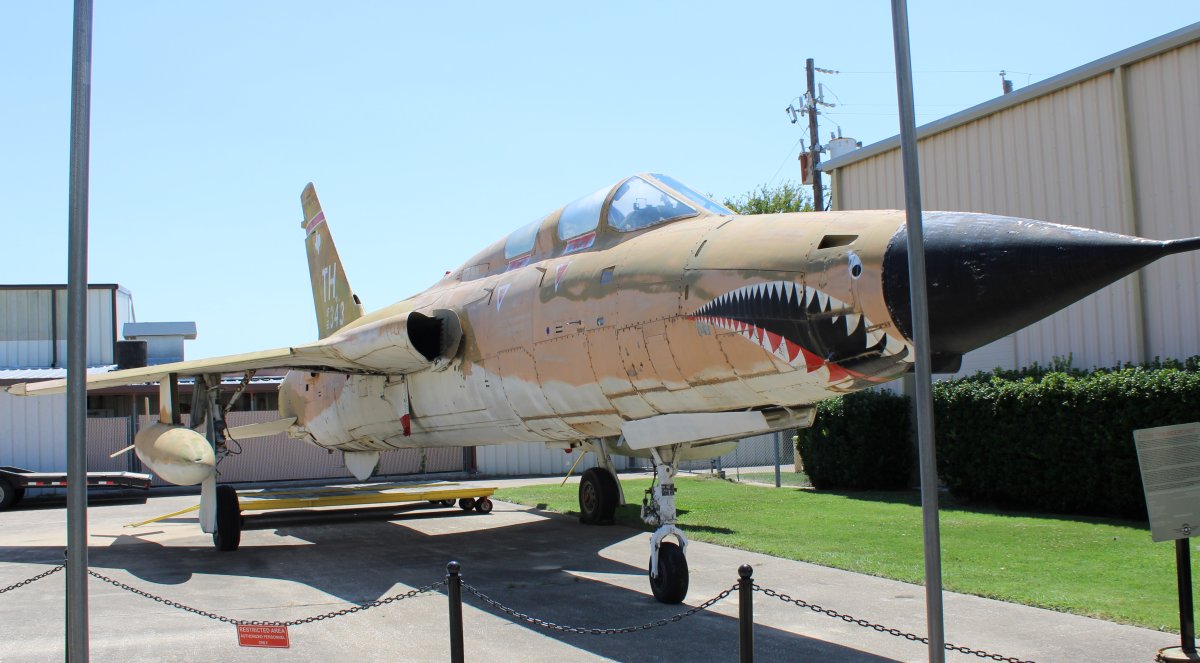 |
|
|
A Polish-built MiG-17.
|
| |
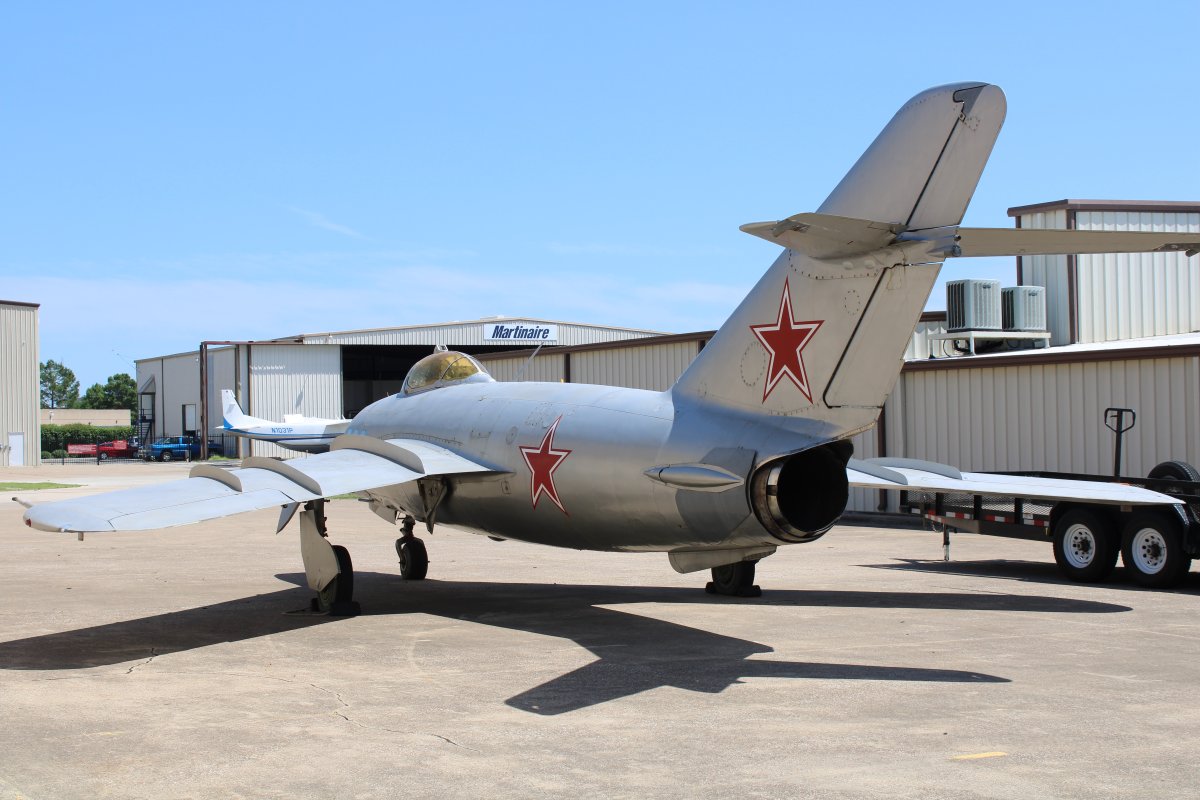 |
|
| Neat model of the U.S.S. Hornet (CV-8) which was the carrier that launched the Dolittle Raid on Tokyo in 1942. Notice the B-25s arrayed on the flight deck. |
| |
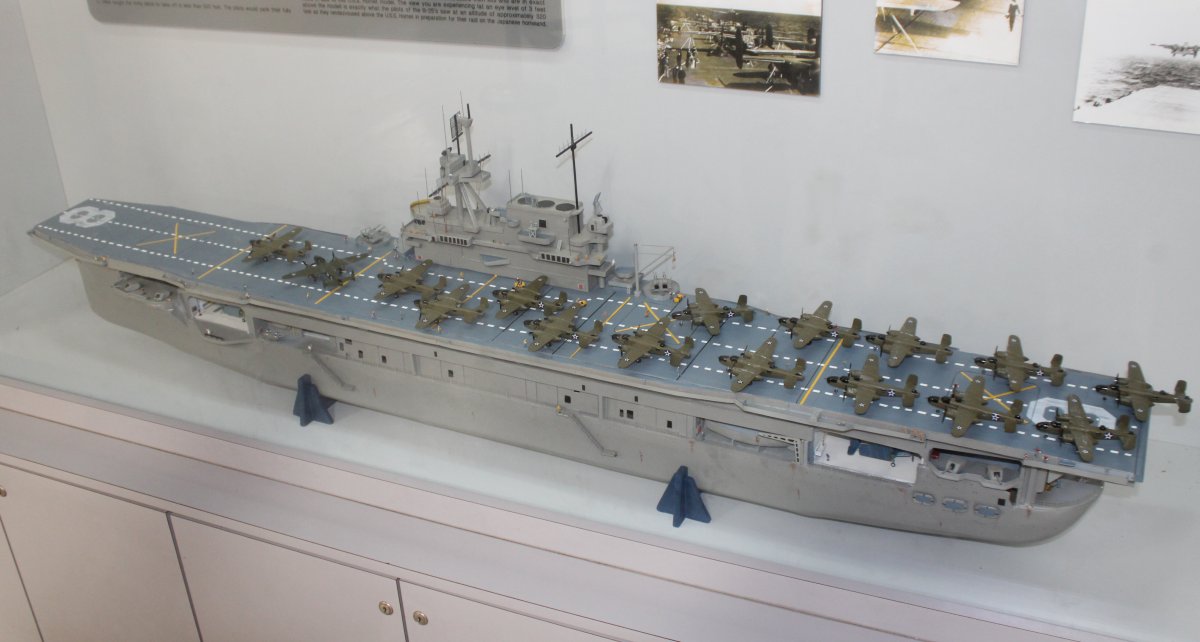 |
|
| Yes! The collectin even includes a Fokker DR-1 Triplane. This one is a full-scale reproduction with a more modern Warner radial engine, as well as a tailwheel versus the traditional tailskid. |
| |
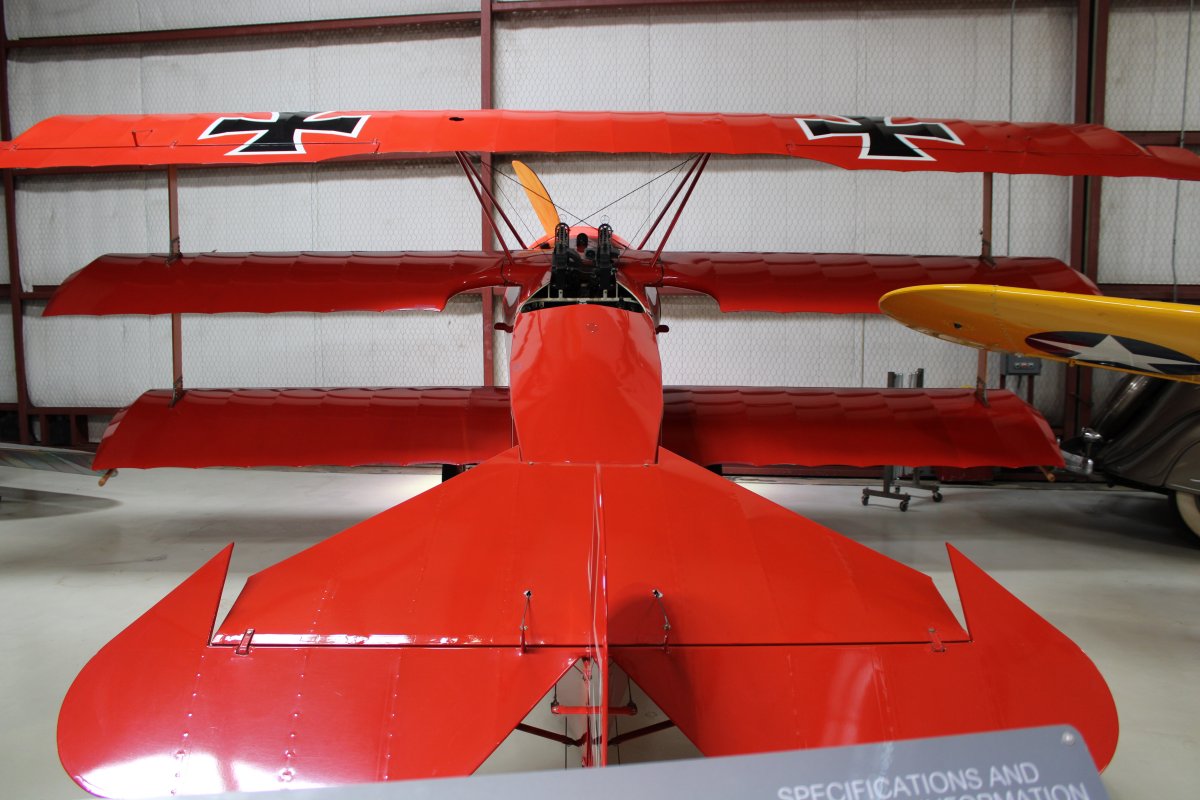 |
|
|
A closer look at the cockpit area.
|
| |
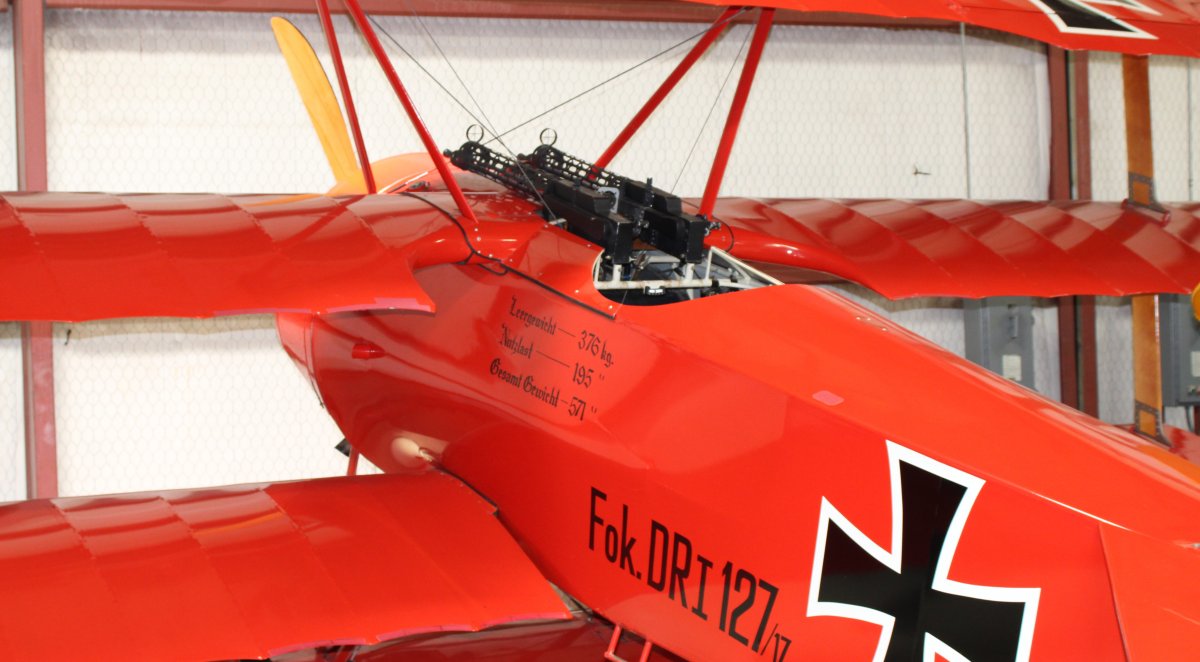 |
|
|
In late 1916, the Halberstadter Flugzeuwerke (airplane factory) began development of a new type of two seat fighter to fulfill a military requirement for a defensive patrol and pursuit aircraft. The new CL type aircraft were smaller than the existing C type and designed to escort reconnaissance aircraft. The Halberstadt CL.II went into production and reached front line units by August 1917. With its excellent maneuverability, good climb rate, and wide field of view for the rear gunner, the CL.II received immediate acclaim. A total of 700 CL.IIs were built by mid 1918.
The CL.II on display is a full scale reproduction aircraft, built by Ronald J. Kitchen in 2009. It was added to the Cavanaugh Flight Museum collection in December 2012.
|
| |
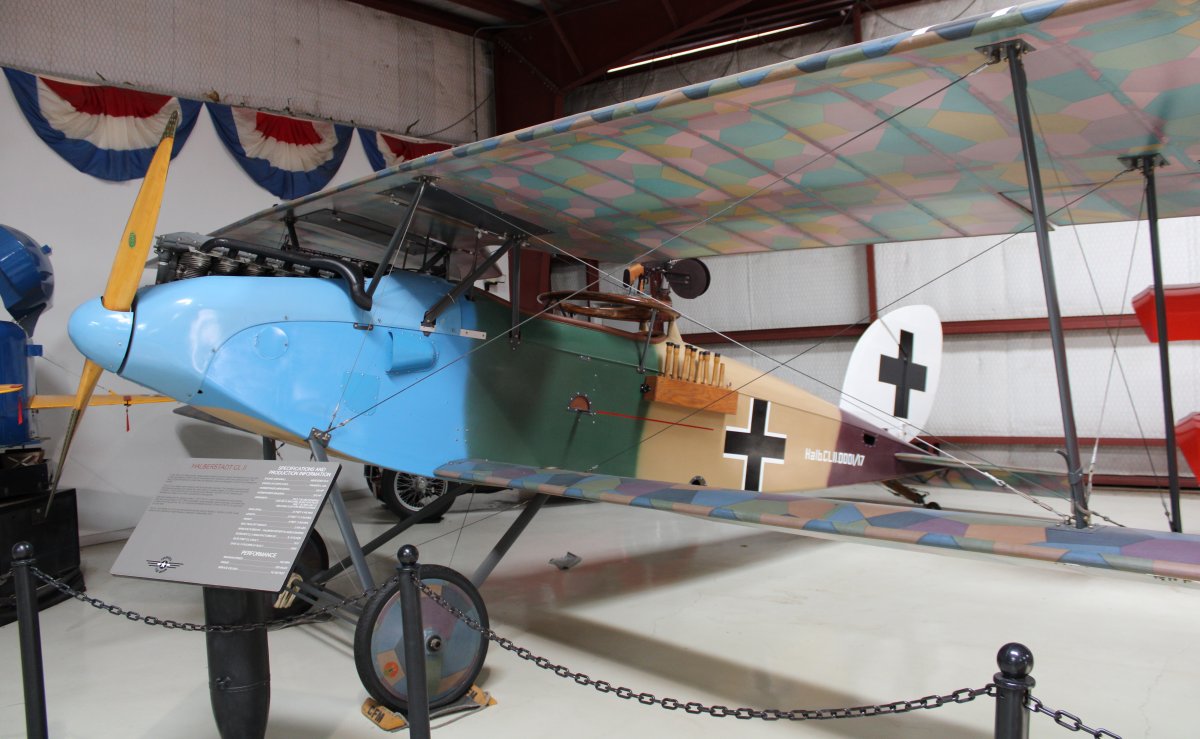 |
|
|
The Fokker D.VII was arguably the finest fighter of the war. Designed by Reinhold Platz, the D.VII competed against a number of other designs during a competition held in early 1918. The aircraft was tested by Baron Manfred von Richthofen, and he found the plane simple to fly, steady in a high-speed dive and possessing excellent pilot visibility. Thanks to the support of the famous "Red Baron", the D.VII was ordered into mass production as Germany's premier front line fighter. However, Fokker was unable to produce D. VIIs fast enough, so the Albatross and the Allegemeine Elektizitats Gessellschaft (A.E.G.) companies also produced the D.VII. When World War I ended in November 1918, these three companies had built more than 1,700 D.VIIs.
German pilots who flew combat in the D.VII marveled at the plane's high rate of climb and excellent handling characteristics. They also enjoyed the fact the D.VII's service ceiling was higher than most Allied fighter planes. This advantage allowed D.VII pilots to built up speed and energy during an attack run, giving them the luxury of being able to pick and choose their targets. In August 1918, Fokker D.VII's destroyed 565 Allied aircraft - making the D.VII one of the most feared aircraft of the war.
This Fokker D.VII is a full scale flying replica built by James Osborne from original specifications and fitted with an original Hall Scott engine and instruments. It is interesting to note that most of the D.VIIs handed over to the U.S. and England had their Mercedes engines replaced with engines built by the Hall Scott company. The replica aircraft on display is painted in the personal colors of Ernst Udet of the German Air Command. Captain Udet was one of the more famous German aces of World War I and was credited with 62 Allied kills.
|
| |
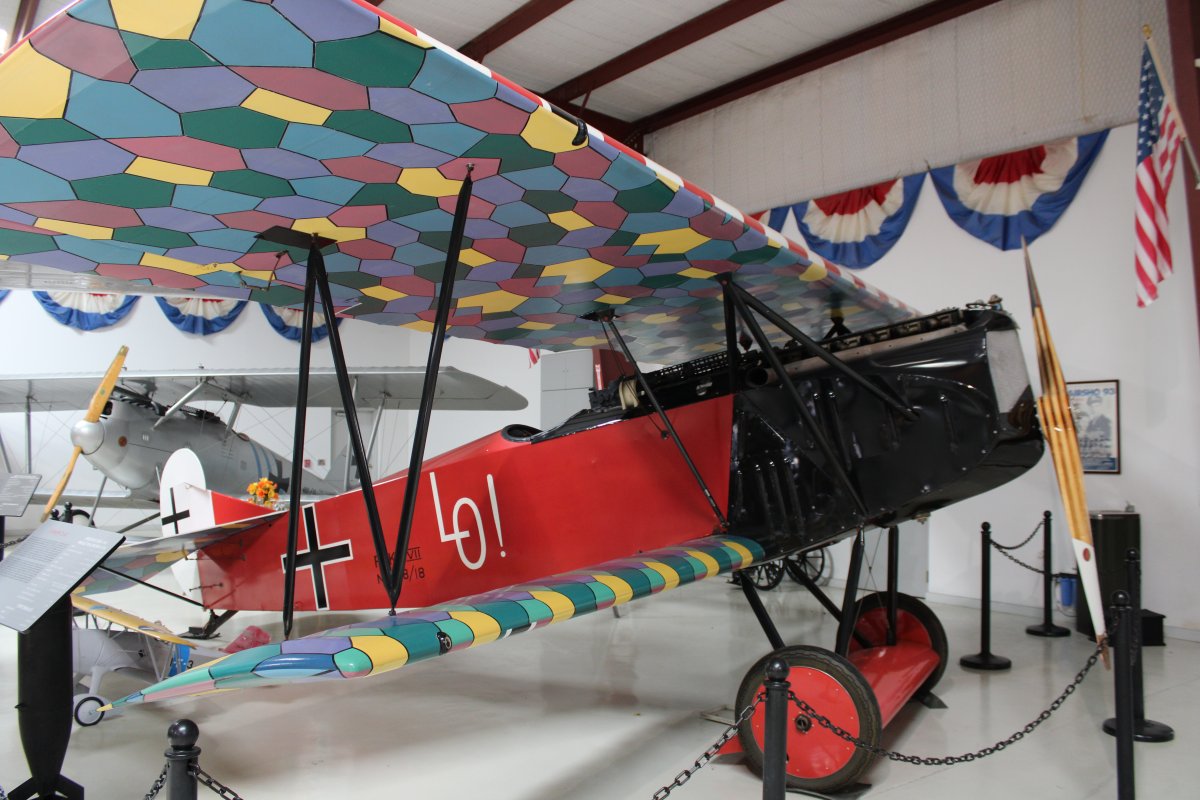 |
|
| Now this is something I'd like to see in more aircraft museums: an art gallery. The Cavanaugh flight museum has an impressive aviation art gallery that includes pieces from Keith Ferris, Roy Grinnell, William Phillips, John Shaw, Stan Stokes, Robert Taylor, and Nicholas Trudgian. |
| |
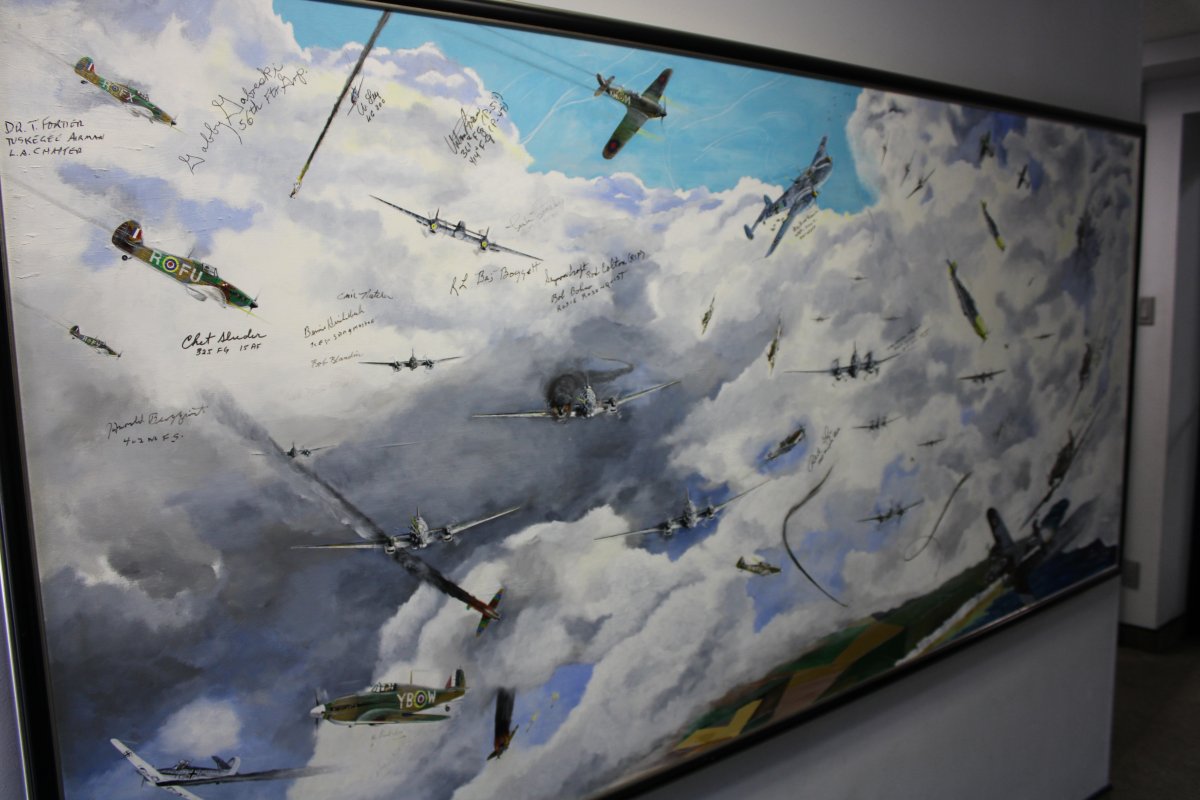 |
|
| Ken is a man of many talents. This is his salt-water acquarium at his house, which he can monitor, and control remotely, using his smartphone. |
| |
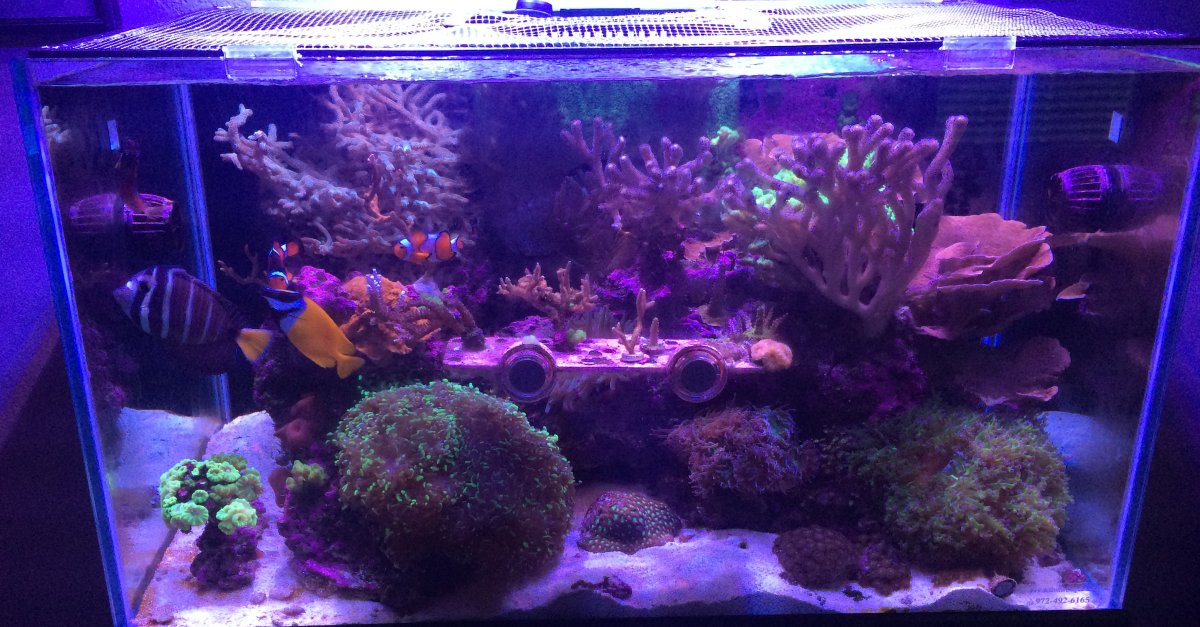 |
|
| |
| |
|
|
|
|
|
|































